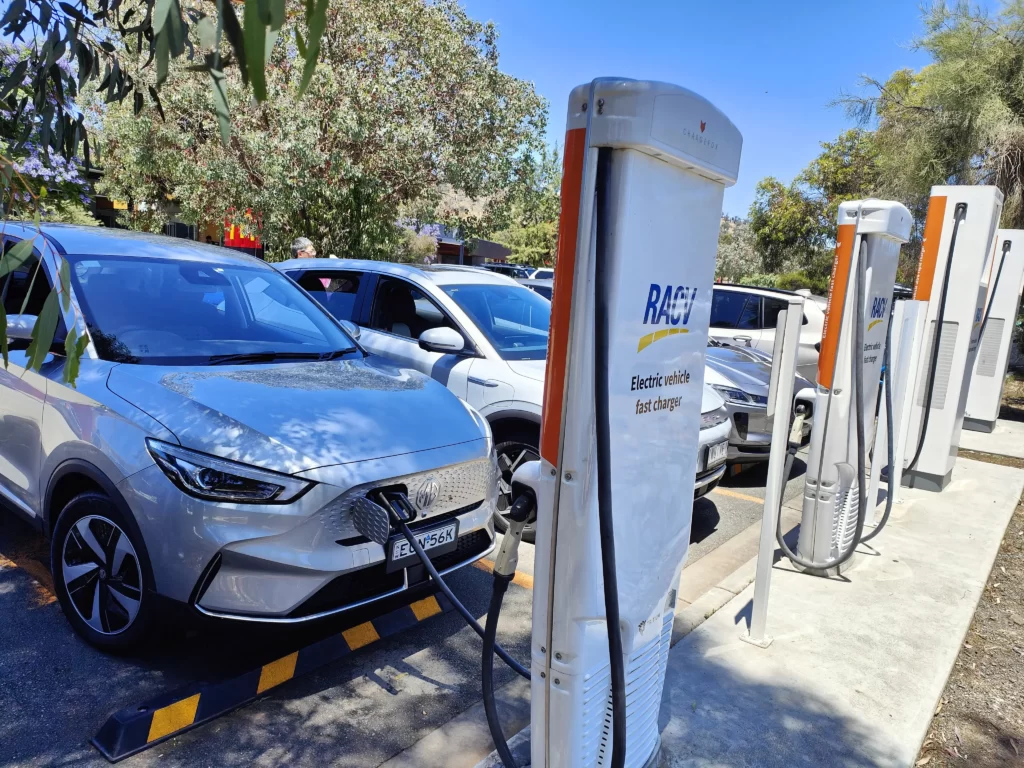While I was driving a review loan MG ZS EV electric car from Sydney to Melbourne and back again during the Christmas period last year I noticed that even with owners of medium range EV’s, there was a degree of charger anxiety near the 140km DC fast charging gap between Chargefox Barnawartha North and Chargefox Euroa.

According to the Wangaratta Chronicle an Evie Networks 2 x 50kW charger location in their town was supposed to be activated in time for the Christmas 2022 peak road trip season but it was only grid connected and activated in mid-March 2023.

This Wangaratta location is a great way to reduce range/charger anxiety as it’s 54km South of Chargefox Barnawartha North and 87km North of Chargefox Euroa.

To find out what caused this delay I asked Edward Lynch-Bell (Product Development) who was at the Fully Charged Live Sydney stand for Evie Networks.
Ed revealed that Distributed Network Service Providers (DNSP) often hold up activating a new charger site for months until they arrive to do the final work required on their part.
Even worse at the beginning of the process to setup a new charging location it can take up to 9 months to get a response to a connection application to a DNSP.
What is a DNSP you ask? Solar Victoria has a good explanation:
“DNSP stands for Distributed Network Service Provider. They are the organisations that own and control the hardware of the distributed energy network such as power poles, wires, transformers and substations that move electricity around the grid. They also supply the electricity meter at your home”.
In Australia there are different DNSPs for each state, and there can be multiple DNSPs within each state. Randomly chosen examples are Ausgrid in NSW and CitiPower in Victoria.
At the time I spoke with Ed, Evie Networks said they were experiencing long delays holding up 11 new sites including Wangaratta (which was otherwise ready since November 2022) because DNSP’s were taking so long to finish the final task that enables a site to be operational.
As an aside while many people think the electric car charging networks are making huge profits that is not the case.
For example heavy demand charges from DNSP’s at some locations means it’s hard to make a profit until usage of a site is quite frequent.
What is a demand charge? Canstar has a good explanation but basically it’s an added charge on top of your actual usage, based on the peak power draw during a time period on one day that month.
Demand Charges can be quite expensive for electricity bill payers at a place like an electric car charging location which can experience widely varying power drawn from the grid at different times of day.
As an example if a hypothetical charging site somewhere (nothing to do with Evie Networks) has fairly steady usage through most of December and then a huge increase during the example demand time of 3pm-9pm on Christmas Eve, they could have to pay a hefty demand charge based on the highest peak power draw during 3pm-9pm that day eg: 500kW, which is then added as an extra daily cost for the electricity bill across the whole month.

Leave a Reply